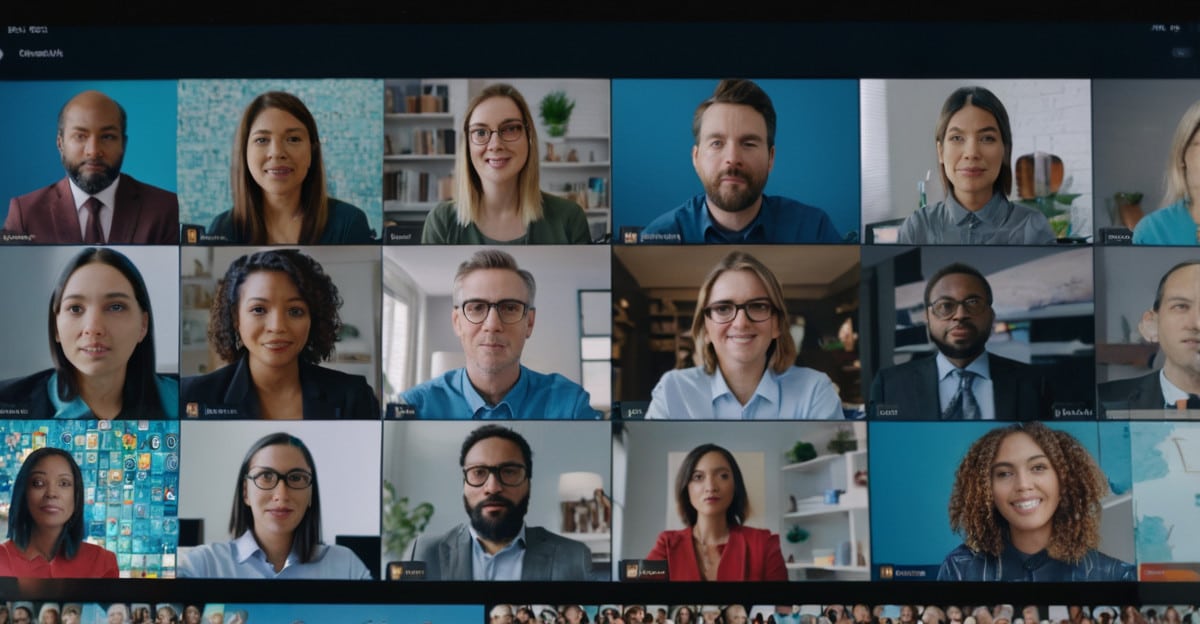Introduction
In 2024, remote work is expected to continue to grow in popularity, and success in this endeavor depends on having the appropriate tools. These remote work tools can support you in staying connected and productive, from communication to project management. We’ll look at the top ten necessary tools that any remote worker should think about in this post.
1. Slack: Streamlined Communication
Slack transforms remote teams in a big way. It provides a platform on which you may set up channels for various departments, projects, or subjects. You can integrate it with other programs like Zoom, Trello, and Google Drive thanks to its integration options. Slack is an all-in-one communication application that also allows video conferencing and direct messaging.
Slack’s ability to lessen email clutter is one of its best qualities. You can easily look through previous messages and hold real-time conversations in place of interminable email threads. Furthermore, Slack’s mobile app makes sure you never lose connection when you’re on the go.
Slack’s Do Not Disturb functionality is invaluable for teams who operate in multiple time zones. You can control your availability using it, so you won’t be bothered while it’s not in use. All things considered, Slack is essential for preserving effective and transparent communication in a remote work setting.

2. Zoom: Seamless Video Conferencing
For good reason, Zoom is now synonymous with video conferences. With its excellent video and voice calling capabilities, it’s perfect for webinars, virtual events, and distant meetings. Zoom offers a wide range of conferencing services, including breakout rooms, screen sharing, and recording capacity.
Zoom’s user-friendliness is among its main benefits. Regardless of whether you’re participating in a meeting via a mobile device or a laptop, the UI is simple to use. It is therefore usable by users with all levels of technical proficiency.
Strong security features like password-protected meetings and end-to-end encryption are also provided by Zoom. Your discussions will remain secure and private thanks to these features. Zoom fills the void in face-to-face interactions in remote work environments by offering a dependable virtual communication platform.
3. Trello: Effective Project Management
Trello is a visual project management application that assists with task organization through the use of boards, lists, and cards. Because it gives a clear picture of what has to be done, who is responsible, and how each job is progressing, it is ideal for remote teams. Trello’s drag-and-drop interface facilitates the seamless transition of jobs between different completion stages.
Trello’s adaptability is one of its benefits. Trello may be tailored to meet your needs, regardless of whether you’re in charge of a straightforward to-do list or a complicated project involving several team members. Each card can have comments, labels, attachments, and due dates added to it so that all the necessary information is in one location.
Trello’s usefulness is expanded via integrations with other programs, such as Slack and Google Drive, which turn it into a project management hub. Trello offers remote workers a clear, well-organized method of monitoring progress and facilitating productive collaboration.

4. Asana: Advanced Task Tracking
Another effective project management tool that keeps remote teams on schedule is Asana. When compared to Trello, it provides more sophisticated capabilities including task dependencies, workload management, and timeline views. You can create tasks on Asana, assign them to team members, and set deadlines thanks to its intuitive UI.
Asana’s ability to divide big projects into smaller, more achievable tasks is one of its best qualities. This facilitates maintaining attention on personal obligations while maintaining a broad perspective. You can visualize deadlines and steer clear of bottlenecks with the calendar view.
In order to streamline your productivity, Asana now enables integrations with programs like Dropbox, Google Drive, and Slack. Asana offers a complete task tracking and project management solution for remote teams, keeping everyone in sync and producing results.
5. Google Workspace: Collaboration Suite
The suite of productivity and collaboration capabilities that Google Workspace, formerly known as G Suite, offers is indispensable for remote work. Google Meet, Google Docs, Google Sheets, Google Drive, and Gmail are all included. Because of the way these tools are made to work together, cooperation is simple and effective.
Real-time collaboration is one of Google Workspace’s main advantages. The same document can be worked on by multiple team members at once, and changes are instantly stored. This guarantees that everyone is in agreement and removes the need for back-and-forth emails.
All of your files can be safely stored in the cloud with Google Drive and accessed from any device. With its calendar integration, Google Meet provides dependable video conferencing features that make scheduling simple. Google Workspace is an all-in-one solution that improves communication and productivity for remote teams.

6. Microsoft Teams: Unified Communication
Microsoft Teams is a platform for teamwork that includes file storage, video conferencing, chat, and app integration. Organizations that now use Microsoft 365 will find it especially helpful because of its seamless integration with other Microsoft products like Outlook, OneDrive, and SharePoint.
With the help of Teams’ persistent chat features, you may monitor discussions over time. Creating channels for distinct projects or divisions facilitates easy conversation organization. Features for video conferences include virtual backdrops, screen sharing, and meeting recording.
Microsoft Teams’ ability to integrate with other apps is one of its best features. You can easily connect file storage systems like Dropbox and project management applications like Trello into Teams. As a result, it becomes the focal point for all of your remote work requirements, facilitating teamwork and communication.
7. Miro: Interactive Whiteboards
Miro is an online collaborative whiteboard tool that works well for planning, team meetings, and brainstorming sessions. It provides a selection of tools and templates for making flowcharts, mind maps, and diagrams. Miro offers a visual real-time collaboration tool for distant teams.
The adaptability of Miro is one of its advantages. Miro’s user-friendly interface makes it simple to visualize your ideas, whether you’re organizing a project, running a workshop, or just brainstorming. You can embed files and photos, do freehand drawings, and add sticky notes.
To improve its functionality, Miro also allows interfaces with programs like Trello, Slack, and Google Drive. Miro is a fantastic tool for encouraging creativity and teamwork among remote workers, adding interactivity and interest to virtual meetings.
8. LastPass: Secure Password Management
You can safely keep and manage your passwords with the aid of LastPass, a password manager. With so many accounts and logins to manage, LastPass offers remote workers a safe and practical alternative. Strong passwords are created by it and kept safe in an encrypted vault that is accessible from any device.
The autofill feature of LastPass is one of its main advantages. LastPass saves you time and effort by automatically entering your credentials when you visit a login page. Other private data, including credit card numbers and safe notes, can also be kept.
Multi-factor authentication (MFA) is a feature that LastPass provides to enhance the security of your accounts. By guaranteeing that all members of remote teams can safely access the platforms and resources they require, LastPass lowers the possibility of security lapses.
9. Toggl: Time Tracking and Productivity
Toggl is a time tracking application that facilitates efficient time management for remote workers. It gives you information on how you’re using your time, which enables you to pinpoint areas in need of development. You can monitor how much time you spend on various projects and chores using Toggl, which helps you stay productive and organized.
Toggl’s simplicity is one of its best qualities. It is simple to start and stop timers, add descriptions, and organize your work using the user-friendly interface. To examine your productivity, you can create thorough reports and distribute them to your group.
Toggl streamlines your productivity with its integrations with Trello, Asana, and Slack, among other apps. Toggl gives remote workers a clear image of their time management, assisting in maintaining efficiency and focus.
10. Notion: All-in-One Workspace
Notion is a flexible workspace application that integrates task management, note-taking, and database building. Because of its great degree of customization, you can design a workspace that precisely suits your requirements. Notion provides a centralized platform for information organization and project collaboration for remote teams.
The adaptability of Notion is one of its advantages. Notion offers the resources you require, whether you need to make a straightforward to-do list, an intricate project plan, or a knowledge base. It’s a vibrant and dynamic workspace since you can add text, photos, links, and files to your pages.
Additionally, Notion facilitates real-time collaboration, enabling several team members to collaborate simultaneously on the same document. Its functionality is improved via integrations with programs like Slack and Google Drive. Notion is an all-in-one solution that increases productivity and organization for remote workers.
Conclusion
Success in 2024 depends on having the appropriate remote work tools. With these tools, you can manage projects, communicate with others, stay secure, and be productive in a remote work environment. No matter where you are, you can stay productive, improve communication, and optimize operations by implementing these crucial technologies into your workflow.






